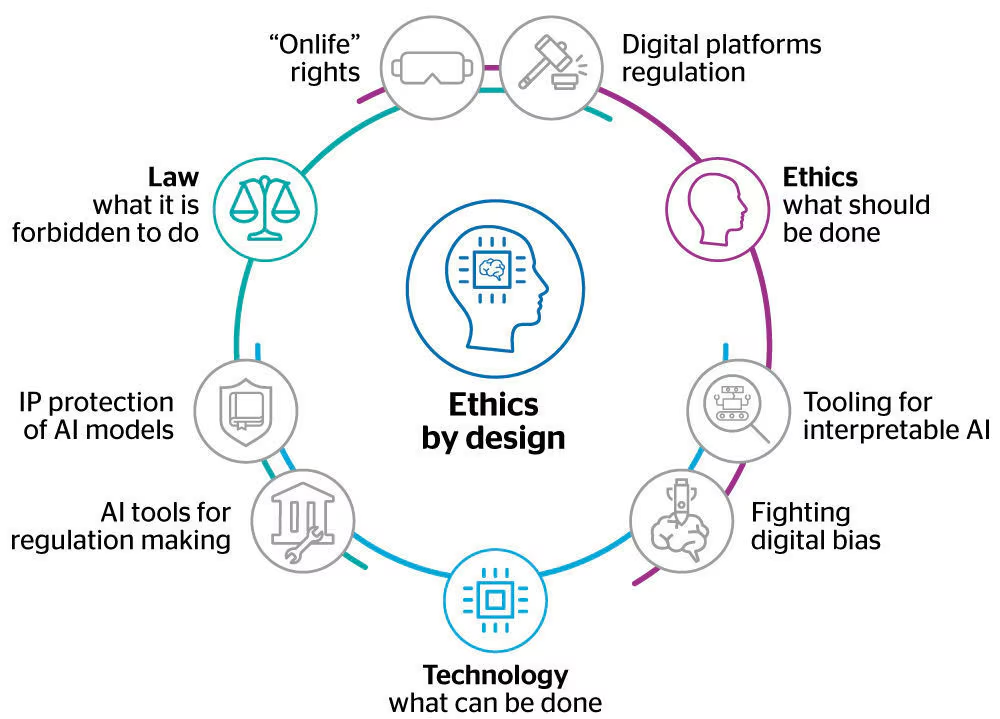Introduction
Ethical AI in Artificial Intelligence is no longer science fiction; it’s here, and it’s making decisions that affect real lives. From healthcare diagnostics to hiring algorithms, AI shapes our world in profound ways. But with great power comes great responsibility. Without ethical safeguards, AI can reinforce biases, violate privacy, and even cause harm.
AI changes how we live and work. But it can cause harm if used carelessly. Think of hiring tools that reject women or healthcare AI that misdiagnoses minorities. Then, these problems arise when we rush AI development without considering ethics.

The good news? You can fix this. Let’s explore how.
5 Easy Steps to Ethical AI
1. Make AI Decisions Clear (No Black Boxes!)
People deserve to understand AI choices. If a loan gets denied, explain why. Then, use simple AI models that show their work. Complex systems confuse users and hide biases.
Moreover, Tip: Try explainable AI tools like LIME or SHAP. They break down decisions well.
2. Stop Bias Before It Starts
AI learns from past data, which often includes unfair biases. Fix this by:
- Firstly, checking data for gender, race, or age imbalances
- Next, testing AI with diverse groups before launch
- Then, updating models regularly to catch new biases
Furthermore, for example, Amazon stopped using a biased hiring AI. Now they check the tools carefully first.
3. Guard Privacy Like a Watchdog
Moreover, AI needs data, but people need privacy. Follow these rules:
- Firstly, never collect unnecessary personal details
- Secondly, encrypt all sensitive information
- Then, let users control their data
Furthermore, Smart Move: Apple’s iPhones process data on your device. Then, nothing goes to the cloud unnecessarily.
4. Assign Clear Responsibility
When AI messes up, someone must answer. Do this by:
- Naming an AI ethics leader at your company
- Keeping detailed records of all AI decisions
- Then, creating a simple way to report problems
Moreover, Good Example: Microsoft has an ethics team that reviews all risky AI projects.
5. Include Diverse Voices
Finally, different perspectives catch problems early. Involve:
- People from various backgrounds
- Community members affected by your AI
- Ethics experts in development talks.
- Pro Tip: Run small tests with real users before full launch.
Ethical AI Success Stories
Healthcare Wins
A Boston hospital fixed its AI diagnosis tool. Now it works equally well for all skin tones. How? They added more diverse patient photos to their training.
Banking Breakthrough
A European bank made loan approvals fairer. Then, their new AI explains every rejection clearly. Applicants now get specific reasons, not just “no.”
Hiring Help
A tech company removed biased words from job ads. Then, their AI recruiter now suggests more diverse candidates. Result? Better hires and happier teams.
If you want to read about Meta Quest 3, Click Here
What’s Next for Ethical AI?
New rules are coming:
- The EU will ban risky AI like social scoring in 2025
- California may require bias checks for all hiring AI
- Companies will need ethics certifications for AI systems
Additionally, the trend is clear: ethical AI isn’t optional anymore.
Ethical AI Quick FAQ
Q: Can we make a completely unbiased AI?
A: Not perfectly, but we can get very close with regular checks.
Q: Who pays when AI causes harm?
A: The company using it does. That’s why testing matters.
Q: Is ethical AI expensive?
A: Not if you start small. Then, many free tools can help.
Q: What’s the biggest AI danger today?
A: Deepfakes are spreading fake news. Then, we need detection tools fast.
Q: Will ethics slow AI progress?
A: Slightly, but it prevents costly mistakes later.
Final Thought about Ethical AI
Ethical AI means building technology that helps everyone fairly. Start small today. Then, check for bias. Explain decisions. Finally, protect privacy. These simple steps make a big difference.
